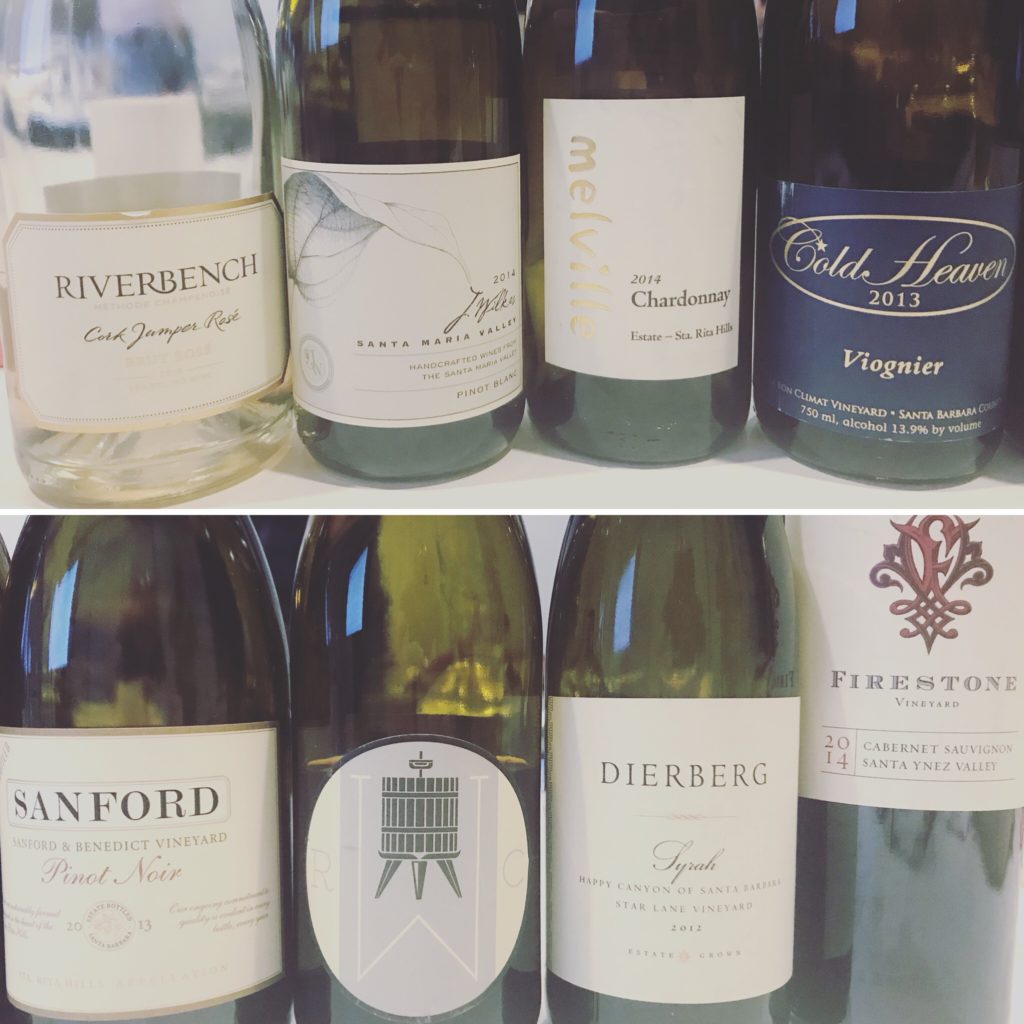I feel like I’ve gone full circle: the first vineyard I’ve ever been to was in Santa Barbara. Here I am with the last class of the California Wine Appellation Specialist program studying the same sub-region, along with the weird loose ends like wines from Los Angeles county, whose appellations all seem to have “Malibu” tacked somewhere in their place names.
It’s odd that I consider the end of a course dramatic enough to something that completes a full circle, but I said it once and I’ll say it again: school is bae. Already looking into more courses, you guys. God damn, tuition. What the fuck is a savings account? If the gayest wines are rosés and Champagnes, it follows that I should probably sign up for the master-level Provence or Champagne courses with the Wine Scholar Guild. Right? Right?!
I haven’t lost any more flash cards in Castro nightclubs, but finding pockets of study time in the middle of the holiday season is real. Luckily (or maybe not), I definitely over-prepared for the exam, which part of me wholly expected anyway, but I do my best to squeeze as much information as I can from courses like these. My score of 96% means I barely landed in an honours designation for my pass! I’m not complaining. Go, me.
I 100% recommend the course, by the way, which I happened to take at the San Francisco Wine School. Not only is the content current, relevant, and stuffed with great info, but it’s rare that you get instruction that’s a perfect combination of level-headed, objective, entertaining, and coming from a place of passion. Hop onto it, y’guys. Brb, Champagne.

Riverbench 2015 “Cork Jumper” Brut Rosé (Santa Maria Valley, Central Coast, California) Dec 2017. $32 USD.
A pale onion skin colour. A sprightly combination of peach, tangering, apple juice, and a hint of yeast. Dry with delicate mousse and ripe grapefruit, ending in more juicy tangerine. 100% Pinot Noir. Reminds me of a cross between a sour beer, sparkling wine, and cider. And I don’t mean that in a bad way: it’s delicious. Pink and magical without being demanding about it, like my phone’s unicorn case. 5.5 g/L dosage; disgorged April 2017.
J. Wilkes 2014 Pinot Blanc (Santa Maria Valley, Central Coast, California) Dec 2017. $20 USD.
Steely and shy. Barely a hint of green apple, citrus, grapefruit, and a hint of nectarine. Light, round, and a little short, with something of a non-committal floral bitterness. A bit numb or nervous. Damn: seems right now that the reveal is Pinot Blanc. Aged 5 months in stainless steel.
Melville 2014 Chardonnay, Estate (Sta. Rita Hills, Santa Ynez Valley, Santa Barbara County, Central Coast, California) Dec 2017. $26 USD.
Much more intense on both the colour and aromas. Lots of char with some flintiness and meatiness, then there’s butter, and yellow apple. Behind the noisy and jutting nose, there’s a hint of something like herbal tea. Pretty chewy, but bright enough so that it doesn’t stick. It’s like a long massage of a wine, slowly slithering and meeting every part of your mouth rather than being super quick and electric. No malolactic fermentation and aged sur lie in neutral French oak.
Cold Heaven 2013 “Le Bon Climat” Viognier (Santa Barbara County, Central Coast, California) Dec 2017. $34 USD.
Back to a pale lemon here, and a youthful burst of flowers and unripe stone fruit. There’s almost a lemon and lime-like candied character to this. It’s dry with some creaminess and texture, but there’s also plenty of acidity along with a note of salted lime pith on the palate. So much energy, with almost a a gueuze-like sour beer lightning to this! Not what I would call a stereotypical Viognier. I’m not often a fan of Viognier done in this finessed and precise style, but this might be the first time I’ve really enjoyed it. Château-Grillet clone, and aged in neutral French oak.
Sanford 2013 “Sanford & Benedict” Pinot Noir (Sta. Rita Hills, Santa Ynez Valley, Santa Barbara County, Central Coast, California) Dec 2017. $60 USD.
Strawberries and black cherries are the main fruits, joined by cola, spice, oak, red delicious apple, and a hint of plum. Brisk and demanding, a fine veil of tannins and the fruit eclipsed by the intense skeleton of acidity. Needs a bit more time, I think. Aged for 14 months in 40% new French oak.
Roark 2013 Syrah (Ballard Canyon, Santa Ynez Valley, Santa Barbara County, Central Coast, California) Dec 2017. $32 USD.
Deep purple. Wild and feral, with blackberry skin, earth, leather, garrigue, and kalamata olive – maybe something animally. Though comparisons could be drawn to the northern Rhone, this is a real unsullied drum solo of a wine: not for the faint of tart. Needs either food or time, but that’s only if you don’t want the volume turned up to 11. Sandy soils. Aged for 16 months in neutral oak.
Dierberg 2012 Syrah (Happy Canyon of Santa Barbara, Santa Ynez Valley, Santa Barbara County, Central Coast, California) Dec 2017. $37 USD.
Deep ruby. Restrained but more seductive than the previous. More waxy and layered; more woody spice instead of herbal; more black olive instead of kalamata olive. Harmonious. Relatively soft and giving, with tannins giving just a light grip. Aged 20 months in 10% new French oak.
Firestone 2014 Cabernet Sauvignon (Santa Ynez Valley, Santa Barbara County, Central Coast, California) Dec 2017. $20 USD.
Deep ruby. Pyrazine greenness right off the bad, with the oak’s coconut in the forefront as well. THere’s also blackcurrant, black cherry, and blackcurrant leaf, along with dill and vanilla not too far behind. Dry and jammy without being gooey, then fine-grained tannins add structure to the black fruit dusted with cocoa. Seems in the box than out, but nonetheless, the finesse is there. 82% Cabernet Sauvignon, 9% Merlot, 9% Petit Verdot. Aged 2 years in French, Hungarian, and American oak; 81% new oak.